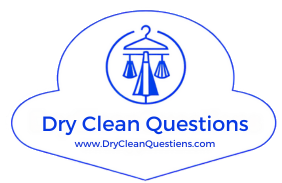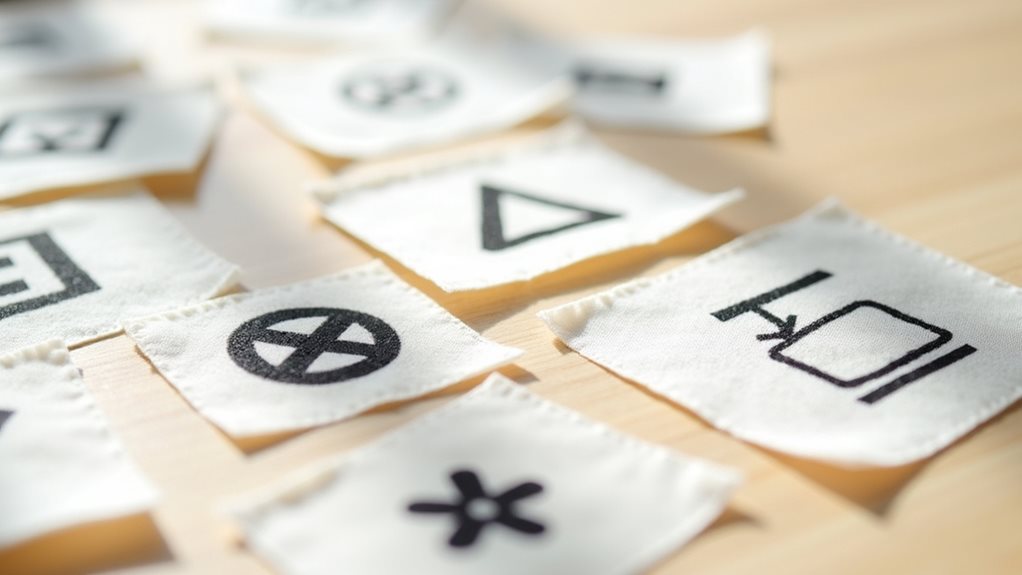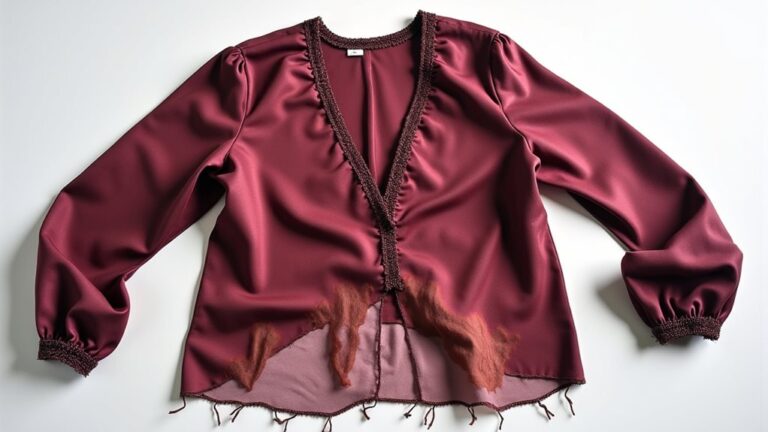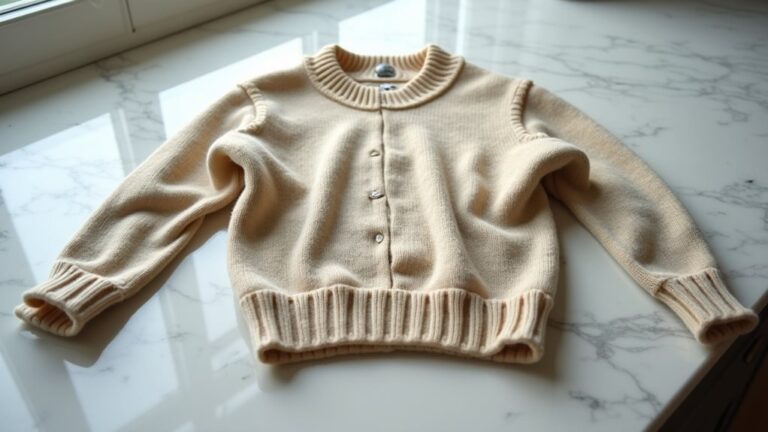Those mysterious circles on your clothing tags aren’t just decorative—they’re your garment’s survival instructions that’ll save you from expensive mistakes. A simple circle means dry cleaning required, while a crossed-out circle screams “don’t you dare!” Letters inside circles tell your cleaner which solvents to use: “A” means any solvent’s fine, “P” restricts certain chemicals, and “F” demands petroleum-based only. Understanding these symbols transforms you from confused shopper to savvy fabric guardian who knows exactly how to protect delicate silks, wools, and structured pieces that water would absolutely ruin, and there’s so much more these little symbols reveal about proper garment care.
Understanding Basic Dry Cleaning Symbols
When I first started doing my own laundry in college, I’ll admit I was completely baffled by those mysterious little symbols on clothing tags – especially that simple circle that seemed so innocent yet held the power to either save or destroy my favorite sweater. 😅
That circle, my friend, is the universal symbol for dry cleaning, and understanding what it means can save you from the heartbreak of a ruined garment and the embarrassment of explaining to your roommate why their borrowed dress now looks like it belonged to a doll.
The basic dry cleaning symbol tells professional dry cleaners exactly how to handle your delicate fabrics.
You’ll see variations like the crossed-out circle (absolutely no dry cleaning), the A inside circle (any solvents are fine), and the F symbol (petroleum-based solvents only).
You may also notice bars underneath the circle, which indicate different gentleness levels required for proper cleaning.
These precautions matter tremendously.
Solvent Type Indicators and Their Meanings
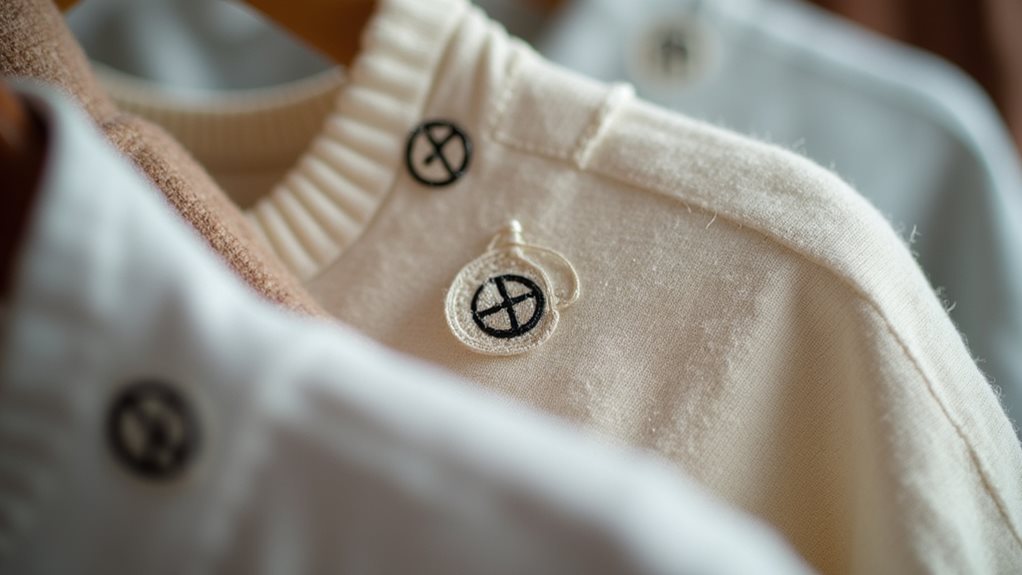
Three main letters inside that all-important circle will dictate exactly how your precious garments get treated during the dry cleaning process, and honestly, learning these distinctions saved me from what could have been a very expensive mistake with my grandmother’s vintage silk blouse.
Each solvent type serves specific fabric needs, and understanding these symbols guarantees your garments receive proper professional care:
- A inside circle – You’re in luck! This means any solvent can tackle your garment during dry cleaning
- P inside circle – Only certain solvents work here, so your cleaner’ll avoid the restricted ones
- F symbol – Petroleum-based solvents only, plus no machine drying allowed
- Crossed-out circle – Stop right there! Skip dry cleaning entirely to prevent solvent damage
These markers guide solvent usage decisions. The traditional solvent perchloroethylene has been widely used in dry cleaning, though many cleaners now offer eco-friendly alternatives for environmentally conscious consumers.
Professional Care Requirements vs. Home Treatment

Although I learned this lesson the hard way after accidentally shrinking my favorite wool sweater in my washing machine, the fundamental difference between professional care requirements and home treatment really comes down to understanding when your garment’s fabric composition and construction demand specialized handling that your laundry room simply can’t provide.
When you see that dry cleaning symbol on your garments care tag, it’s not merely a suggestion—it’s your fabric screaming for help! A crossed-out circle means you shouldn’t even attempt home washing methods, while letter A, letter P, and letter F indicate which petroleum-based solvents professionals should use.
Trust me, professionally dry cleaned items last longer, maintaining integrity that your washing machine simply can’t match. 😊
While professional cleaning preserves your garments, it’s worth noting that traditional dry cleaning uses perchloroethylene (PERC), which the EPA has classified as a probable human carcinogen, so consider allowing freshly cleaned items to air out before wearing them.
Temperature and Process Restrictions for Dry Cleaning
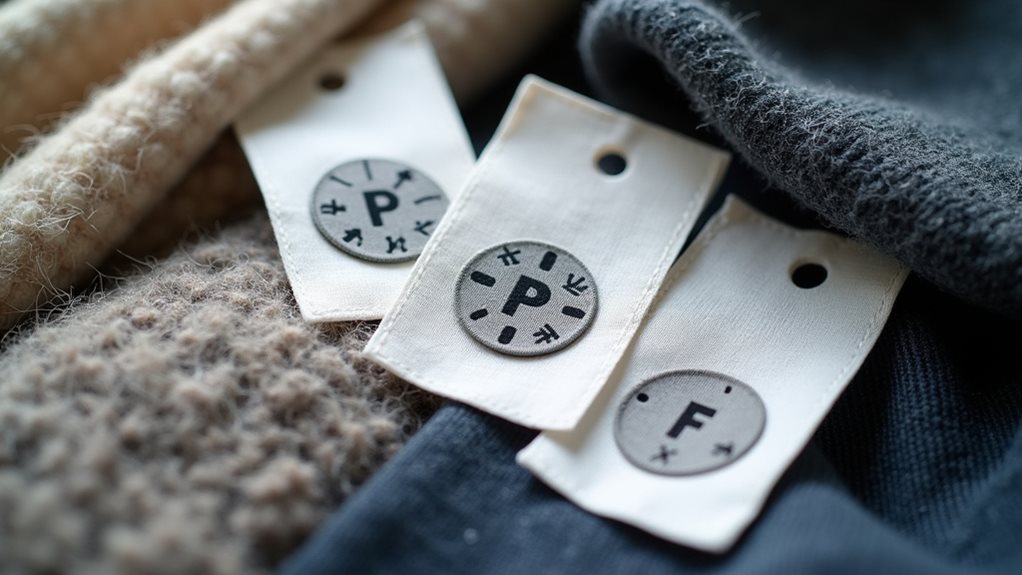
Beyond understanding which solvents your garments can handle, you’ll discover that dry cleaning involves specific temperature and process restrictions that can make or break your favorite pieces—something I learned after watching my delicate silk blouse emerge from an overly aggressive cleaning cycle looking like it had survived a battle.
These dry cleaning symbols communicate essential temperature restrictions and process limitations that protect your garment integrity:
- The circle symbol indicates professional dry cleaning is required, but temperature matters immensely for delicate fabrics.
- Letter A allows any solvent used with standard heat settings, giving cleaners full flexibility in their approach.
- Letter P restricts cleaning to petroleum-based solvents at controlled temperatures, protecting sensitive materials from harsh chemicals.
- A crossed-out circle means absolutely no dry cleaning—period.
The dry cleaning process uses liquid solvents like perchloroethylene or hydrocarbon-based alternatives instead of water, making it particularly effective for oil-based stains and delicate materials.
Understanding these nuances prevents costly mistakes!
Common Fabrics That Require Dry Cleaning Symbols

Several fabrics practically beg for professional dry cleaning, and I’ve learned this lesson through years of trial, error, and more than a few wardrobe casualties that could’ve been avoided with better label literacy.
Reading care labels properly can save you from costly fabric disasters and extend the life of your favorite garments significantly.
Silk, wool, and cashmere top the list of common fabrics sporting those telltale circle dry cleaning symbols, mainly because they’re incredibly sensitive to water and traditional washing methods can destroy their structure faster than you’d imagine.
Your formal wear, suits, and elegant dresses typically carry these symbols since they’re crafted from delicate materials that require specialized cleaning methods to maintain quality and appearance.
Even certain polyester blends and rayon varieties need professional attention due to their delicate nature. Pay attention to letters like “A” or “P” within the circles—they indicate which solvents are safe for proper fabric care.
Garments with special construction features like structured blazers, beaded items, or complex linings also require dry cleaning to maintain their shape and prevent damage from conventional washing’s agitation and heat.
